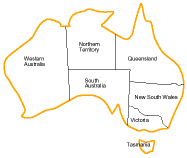|
Written Homework #1 Due Feb 22 1. [30pts, 5 each] Consider the following AI systems. For each, write a short P.E.A.S. (Performance, Environment, Actuators, Sensors) description. For each, characterize the environment [observable, deterministic, episodic, static, discrete, multi-agent]. |
|||||||||||||||||
|
|||||||||||||||||
|
2. [10 pts] DOGCAT is a simple word game which you may have seen before. The player is given two words with the same number of letters (we will be using 3 letter words) in each. For example, DOG and CAT. He or she has to change the first word into the second (or goal) word by replacing one letter at a time with any other letter as long as the result is a proper English word. For example, we could change DOG to FOG but not to GOG (not a proper English word) or to GOD (two letters were changed). Thus, one way of getting from DOG to CAT might be: DOG => COG => COT => CAT. TO make it more interesting, if you replace a letter with a vowel it costs 2 points, otherwise it costs 1 point. Represent this as a search problem. What will a ``state'' be? What's the initial state, successor function, goal test, path cost? 3. [10 pts] One famous AI
problem is to find the possible molecular structures of known constituent
atoms that match mass spectroscopic analysis data. This is called the
``structure-elucidation problem''. 4. [Undergrads 20 pts / Grads 10 pts] Consider that you have to color a map of Australia with only four colors in such a way that no two adjacent regions have the same color.
|
|||||||||||||||||
 |
|||||||||||||||||
|
Set up a state space search formulation for this that is precise enough to be implemented:
[Graduate students only, 10 pts] The straightforward solution here generates a tree with 7!(47) leaves, if drawn out completely. Formulate the problem as above so that the complete tree has only 47 leaves. 5. [30 pts, 10 each] After a football game, you are trying to get from South Campus back up to the Laird Campus with your pet golden fox, your pet blue hen, and a bushel of blue corn. The UDel bus rules only allow you to carry one pet with you at a time, and the bus drivers won't allow you to bring anything else with you when you carry that bushel basket of corn. Sad to say, while you love your pets, your fox would, if left to its own devices, devour your blue hen, and your hen would devour your blue corn if possible. Fortunately, you now know several blind search methods to calculate a sequence of steps that will get all four of you across campus undigested.
|
|||||||||||||||||